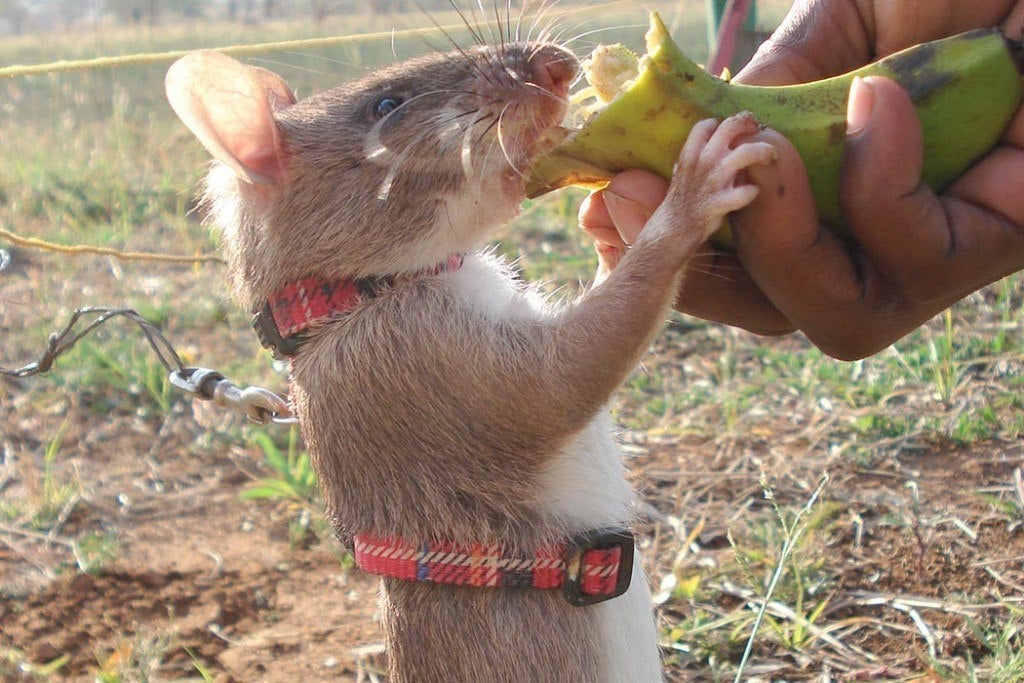How do you find those infected with a highly contagious disease if those people don’t want to be found? A Belgian non-profit working in Tanzania seems to have found the answer: Gambian Pouched Rats. Working in crowded prisons where prisoners rarely volunteer for screening, the rats sniff arrays of samples and identify the infected sample in seconds. The process is faster and more accurate than traditional methods, allowing health authorities to screen the entire prison at once and head off epidemics. The rats first got their start sniffing out land mines; aside from the keen sense of smell the rats are easy to train and live for many years, making them perfect partner animals. But they didn’t pioneer this approach.
Disease detection has never been an exact science. Many illnesses and cancers have no easy or reliable detection method. The poor options led to experiments with using animals’ keen senses to detect cancer. There had been isolated stories of dogs detecting cancer, but Carolyn Willis and colleagues were the first to systematically test dogs’ ability to detect bladder cancer. The method was simple. After a period of training, during which dogs were trained to detect urine from patients with bladder cancer compared to controls, the dogs were presented with seven urine samples, six healthy and one cancerous. Dogs were also tested using cancerous samples and samples containing other substances, including samples from non-cancerous bladder infections.
After controlling for various factors the dogs successfully identified the cancerous sample 41% of the time, much higher than would be expected by chance. That is not a high enough rate to be clinically useful, but the study’s authors only wanted to know if dogs truly possessed the ability to smell cancer, and apparently they do. The authors believe that the success rate would be much higher if the training were more systematic. For example, the specific volatile chemicals associated with bladder cancer were not identified, isolated, and presented to the dogs, only patient urine. Training with the specific chemical is more typical of scent recognition programs.
Since that study, there have been additional investigations of dogs and cancer detection. A 2006 study, for example, found that dogs could detect lung cancer from a patient’s inhaled breath with up to 97% accuracy. As the rats in Tanzania prove, there is no reason to limit this research to just dogs. The rats make a lot of sense in sub-saharan Africa where they are native and less susceptible to local diseases and parasites. When accurate, using animals is cheaper and easier than expensive tests, and there is no need to refrigerate samples, an important consideration in the developing world. Dr. Dog, Dr. Rat, and colleagues, clear your schedules.







